How To Create A Blog Website For Free
Themeisle content is free. When you purchase through referral links on our site, we earn a commission. Learn More
Looking for some free blog sites to help you start sharing your writing with the world? Whether you just want to share updates with your family and friends or you want to start a blog and build a broader audience, we've put together ten great sites where you can start a blog for free.
We'll also try to steer you towards the specific platform that's best for you so that you can easily create a blog for free. Here's what you need to know:
Need full-control of your WordPress blog?
![]() Bluehost gives you a free domain name and lets you create a website from an easy-to-use interface. You also get an SSL and additional features without limiting any customizations. You're the sole owner of your website, which is not standard with some of the other platforms. With their entry-level plan, you get rates as low as $2.75/month for 36 months straight.
Bluehost gives you a free domain name and lets you create a website from an easy-to-use interface. You also get an SSL and additional features without limiting any customizations. You're the sole owner of your website, which is not standard with some of the other platforms. With their entry-level plan, you get rates as low as $2.75/month for 36 months straight.
Best free blog sites to consider in 2021
Here are the best free blogging sites you can use to start your own blog today:
1. Wix (www.wix.com)

👉 Best for…non-techies who want some "regular website" functionality along with a blog.
sponsored Wix is a free website builder that can be totally managed from the front-end. The main characteristic of this platform is that it comes with drag-and-drop options, so you don't have to handle anything in the back-end. The design is very intuitive and modern, which can be used by both beginners and advanced.The nice thing about Wix is that it has free hosting included, so you just need to arrange the layouts, pick a template, and you're all set. It provides a nice collection of free and premium themes and templates for different purposes, including blogging.
To launch a Wix blog, just sign up and make a choice: you can either let the Wix ADI create a site for you based on a questionnaire or build your blog yourself – which includes selecting a template and arranging the layouts via the WYSIWYG editor. If you go with the second option, all you need to do is to find a beautiful template and start customizing everything on the front-end, in a live preview mode.
You can add multiple elements to your pages, from multimedia widgets to backgrounds, menus, typography, forms, video boxes etc. When you think the site is ready, click Publish and start blogging your stories. After publishing, you can return anytime to edit the content blocks.
👉 Read more about the differences between Wix and WordPress and see some great Wix website examples.
2. WordPress (www.wordpress.org)
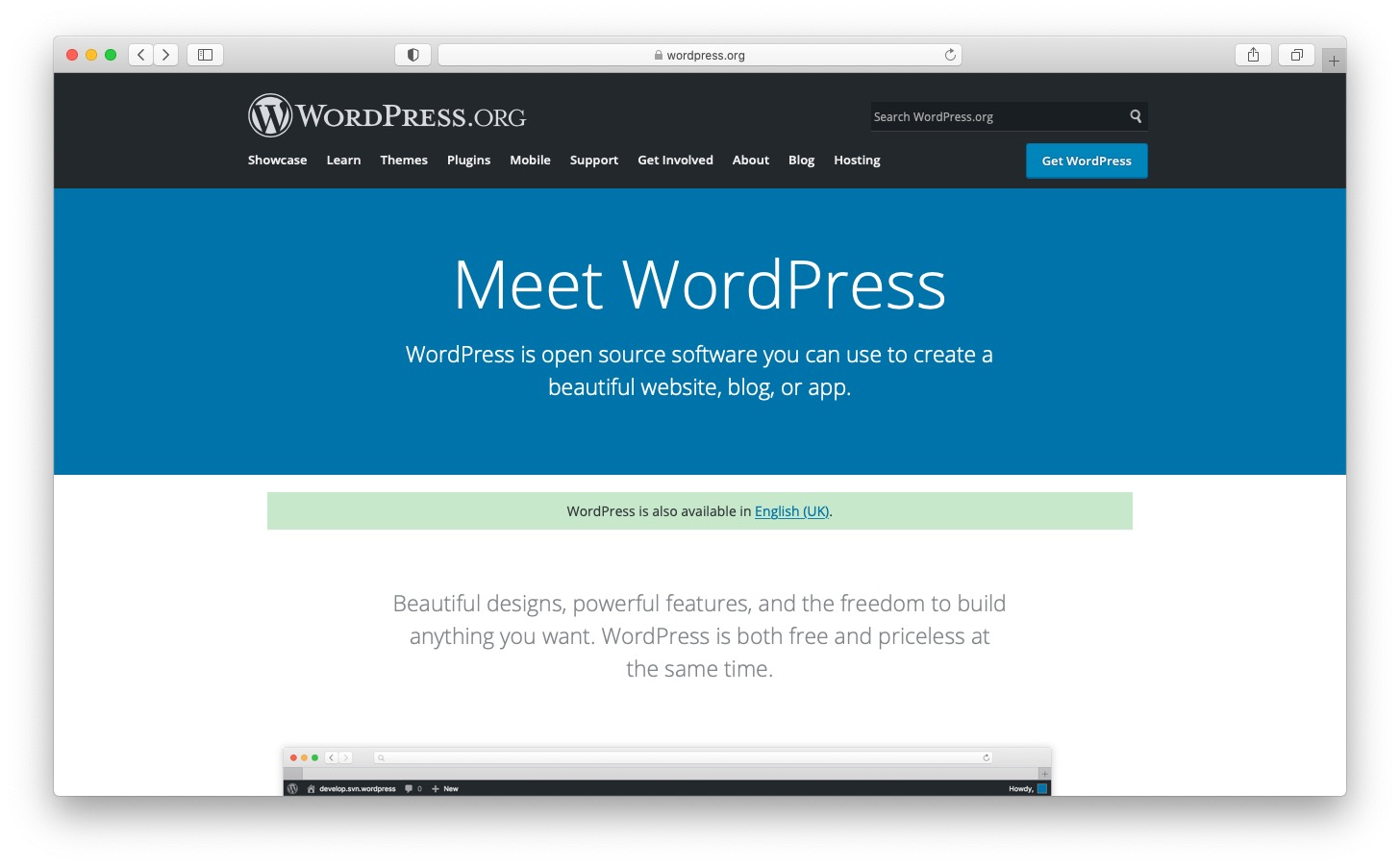
👉 Best for…people who want 100% control of their blog. Perfect for a serious website that you plan to work on long-term.
WordPress.org is the king of free blogging sites. It is a free platform, but you need to build the site mostly by yourself afterward. You also have to host the software yourself. While you can find some free WordPress hosting, a better long-term strategy is to pay a moderate amount for a solid WordPress host.
This is where Bluehost comes into play. Not only is it very cheap (the Basic plan starts at just $2.75 per month when you sign up for three years), but it also provides solid features, including a free domain name, 50GB of disk space, unmetered bandwidth, free SSL, and 100MB of email storage per account. At this very moment, Bluehost is the cheapest sensible WordPress hosting you can find out there.
Because you're hosting the WordPress software yourself, you have full control over how your site looks and functions, as well as how you make money from your site. But the flip side is that the setup process is a little bit more hands-on.
Here's what the WordPress interface looks like when creating a new post:
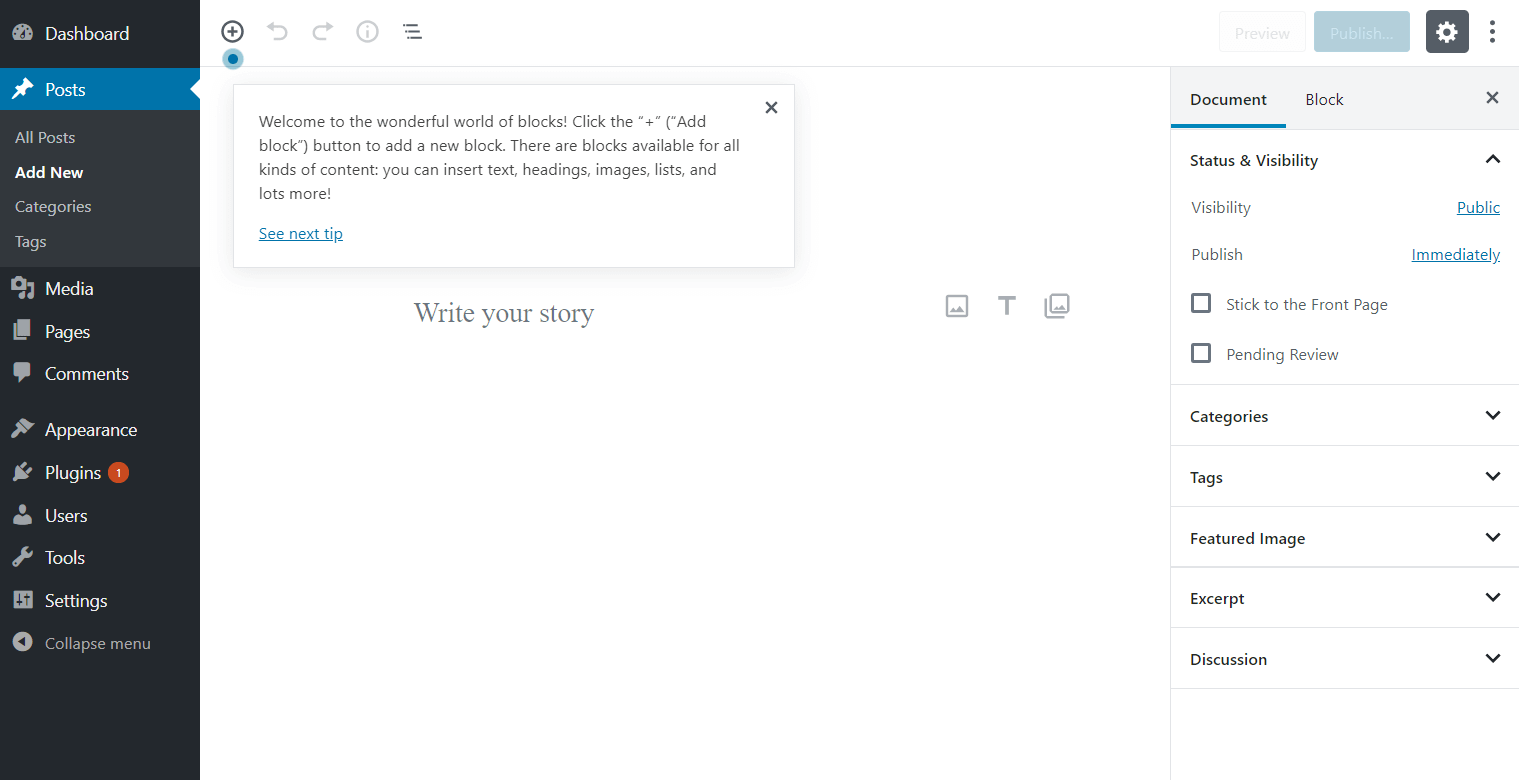
On the opposite side, there's WordPress.com, which is the other face of WordPress – a platform used mostly for personal blogs because it's easy to set up and free (if you're okay not having a custom domain name). However, you're also quite limited in the way you can customize the site.
And especially if your plan is to monetize your blog in any way, the free WordPress.com version will prevent you from doing that.
Considering this, we recommend you to get started with Bluehost. There is a 30-day money-back guarantee in place – in case you change your mind with the whole blogging experiment, just ask for a refund.
👉 Read this for more on the difference between WordPress.com and WordPress.org.
3. LinkedIn (www.linkedin.com)

👉 Best for…business owners and professionals who want to reach a pre-existing audience.
You probably didn't see this one coming. LinkedIn isn't most people's first choice when considering which of the free blogging sites to choose. That being said, it really does deserve some attention!
Two main reasons for this: easy to use tools, and pre-existing audience.
About that second thing – the audience – what's great about LinkedIn's user base is that those are highly focused users, professionals and business owners. In fact, it's reported that more than 30 million businesses are active on LinkedIn. And they're not just there for the sake of it. Other data indicates that 94% of B2B marketers use the platform as one of their primary lead sources.
In short, LinkedIn just works as a platform where you can get exposure, and this makes it one of the best free blogging sites of them all.
From a technical point of view, publishing on LinkedIn is easy. Just go to your LinkedIn feed and use the "Start a post" widget at the top of the page. To convert your status into a full post, click on "Write an article on LinkedIn" to open the full-screen editing window.
This is where you can find all the editing tools that you're used to – for text formatting, adding images, and more.
If you want to learn more about how blogging on LinkedIn works, read this in-depth guide.
4. Weebly (www.weebly.com)

👉 Best for…good alternative to Wix, if you don't like something about the platform.
Weebly is another website builder that you can use not only to blog but also to sell products or showcase your portfolio. It is somewhat similar to Wix to the extent that it provides a WYSIWYG editor with drag-and-drop elements. If you want to add a certain button, you can simply drag it to the page and customize it. The same happens with photo galleries, slideshows, and any other multimedia element.
Weebly provides sidebars, media boxes, forms, ad spaces, social media icons, newsletter subscription, and many more. Moreover, the platform comes with built-in analytics and lets you use your own customized domain (for which you need to pay).
On the free plan, you get five custom pages, a Weebly subdomain, 500MB storage, and ad spaces.
5. Medium (www.medium.com)

👉 Best for…people who just want to write, are looking for a built-in audience, and don't care about having their "own site."
Medium is a multipurpose platform tackling diverse topics, where anyone with an account can write. Unlike most other free blogging sites, the big advantage of Medium is that your articles will be exposed to a wide audience since the platform is visited by 60 million readers (*) per month (and the number increases every year).
It's super simple to use – you pretty much just sign up and start writing. But the downside is that all your content is on Medium. That is, you're not really building your own "space" like you would with WordPress. Read this post for more on the differences between WordPress and Medium.
6. Ghost (www.ghost.org)

👉 Best for…people who need something with a modern vibe. Still, be careful with the technical setup.
This is another WordPress-like blogging platform. While the Ghost software can be downloaded for free, you need paid hosting for fuel. DigitalOcean is a great service that supports Ghost: it is cheap and comes with a bunch of nice features to get you started.
The downside is that installing Ghost isn't as straightforward as WordPress, and you might have to get your hands dirty with some server work – depending on the host you choose for your blog.
To create a post in Ghost is easy once you set up your website. The editor is simple and minimalist, and it offers a live preview of your text on the right side of the screen. On the front-end, you get a Medium vibe, so it's nice. Near the editor screen, there is a sidebar with settings, where you can choose your preferences.
7. Blogger (www.blogger.com)
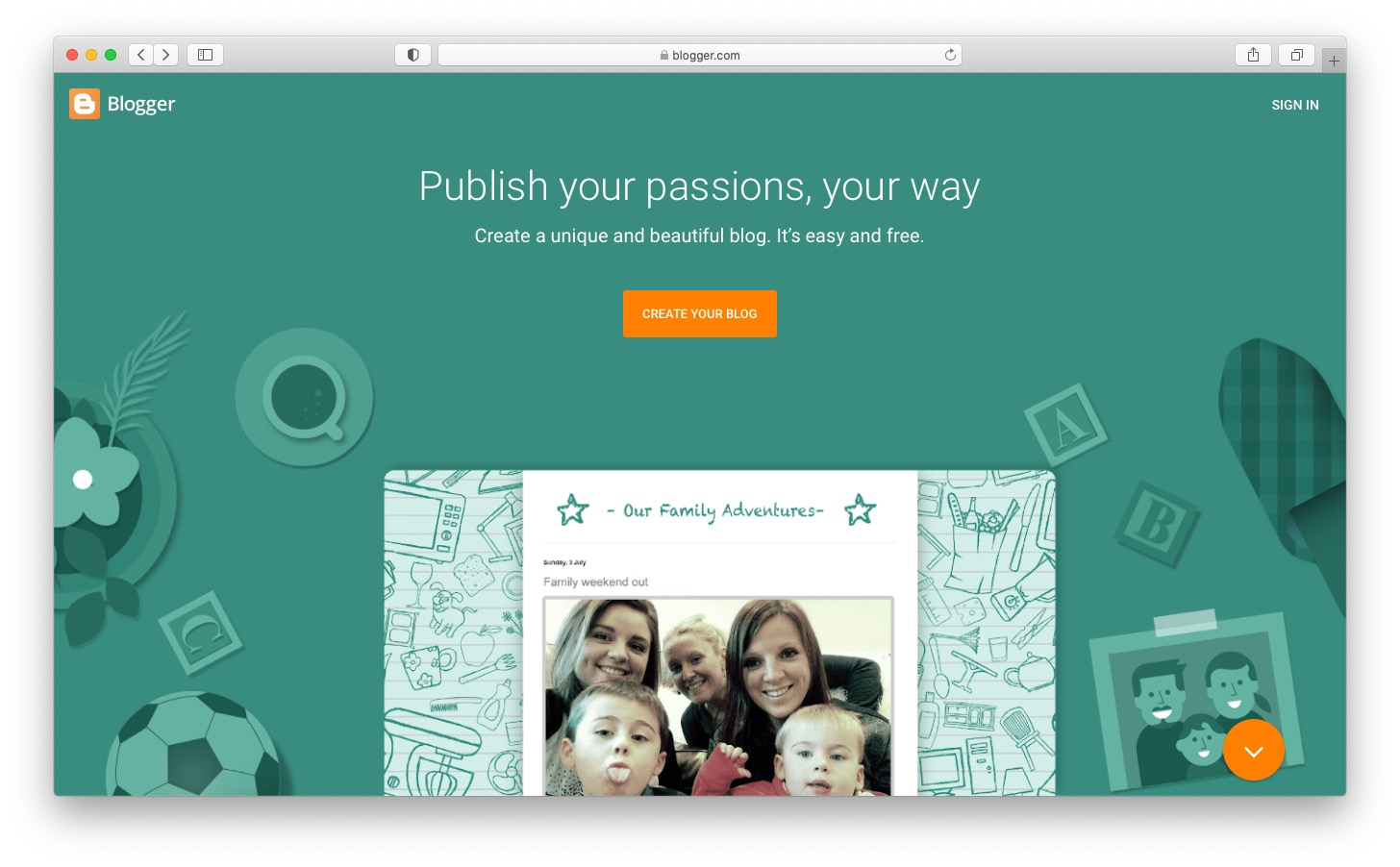
👉 Best for…people who want to write and aren't concerned about owning their own site.
Blogger is one of the oldest free blog sites, though its popularity has dipped in recent years.
It's a solid solution for personal blogs, but it's not the best resource for professional use. It works just like the other hosted platforms: you need to create an account first in order to use it. After you create it (which is simple), you have to pick one of the default themes and you can start writing your thoughts down. This platform has an interface similar to a Google+ profile and the editor looks like a Word page.
Blogger delivers a bunch of themes to choose from, each providing different skins, advanced color filtering, and various minimalist gadgets (aka widgets). But nothing too fancy or any advanced design customization. In general, Blogger has simple appearance options, so the focus stays more on the writing part. A nice part about this site is that it comes with ad spaces that you can place within your content pieces.
8. Tumblr (www.tumblr.com)
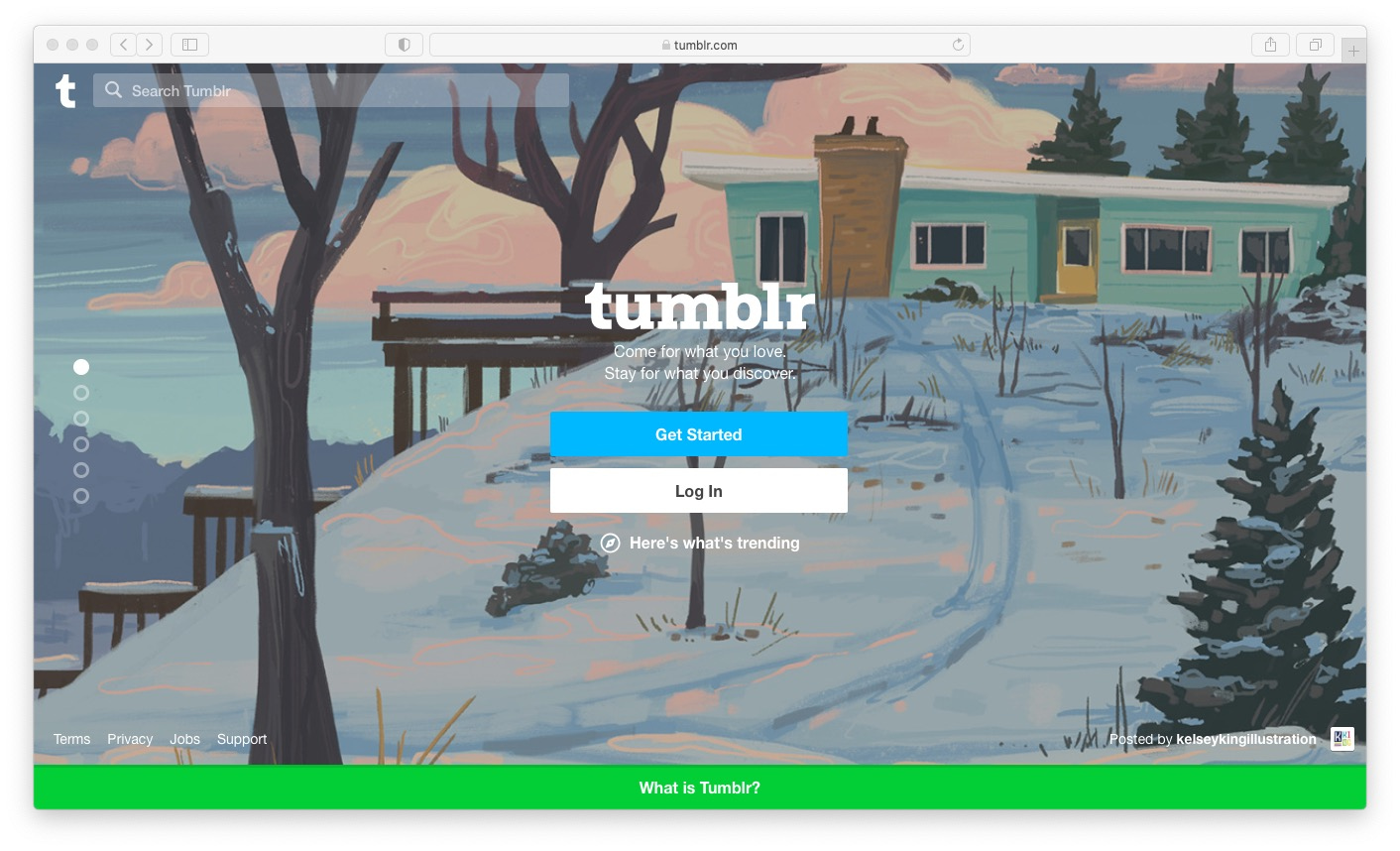
👉 Best for…people who are into more short-form, image-focused content and don't need any "regular website" functionality.
Tumblr is one of the original free blogging sites on the web. It's just a bit 'milder' than the others on the list. Unlike the rest of the platforms that are mostly created for publishing purposes, this one here is more oriented to multimedia or social media-like content. The interface of Tumblr is more playful and is easy to get started with – you can simply sign up and then you're allowed to start posting.
Just like a regular blogging platform, it provides multiple post formats for different types of content. The thing with Tumblr is that it is purely for personal use and wouldn't put up a great solution if you have business-oriented plans. It is simplistic, offers basic customization options and, like I said earlier, has more of a social media vibe.
Despite not being built for business, it does let you display ads on your page, use affiliate links, and integrate your blog with Google Analytics.
9. Joomla (www.joomla.org)
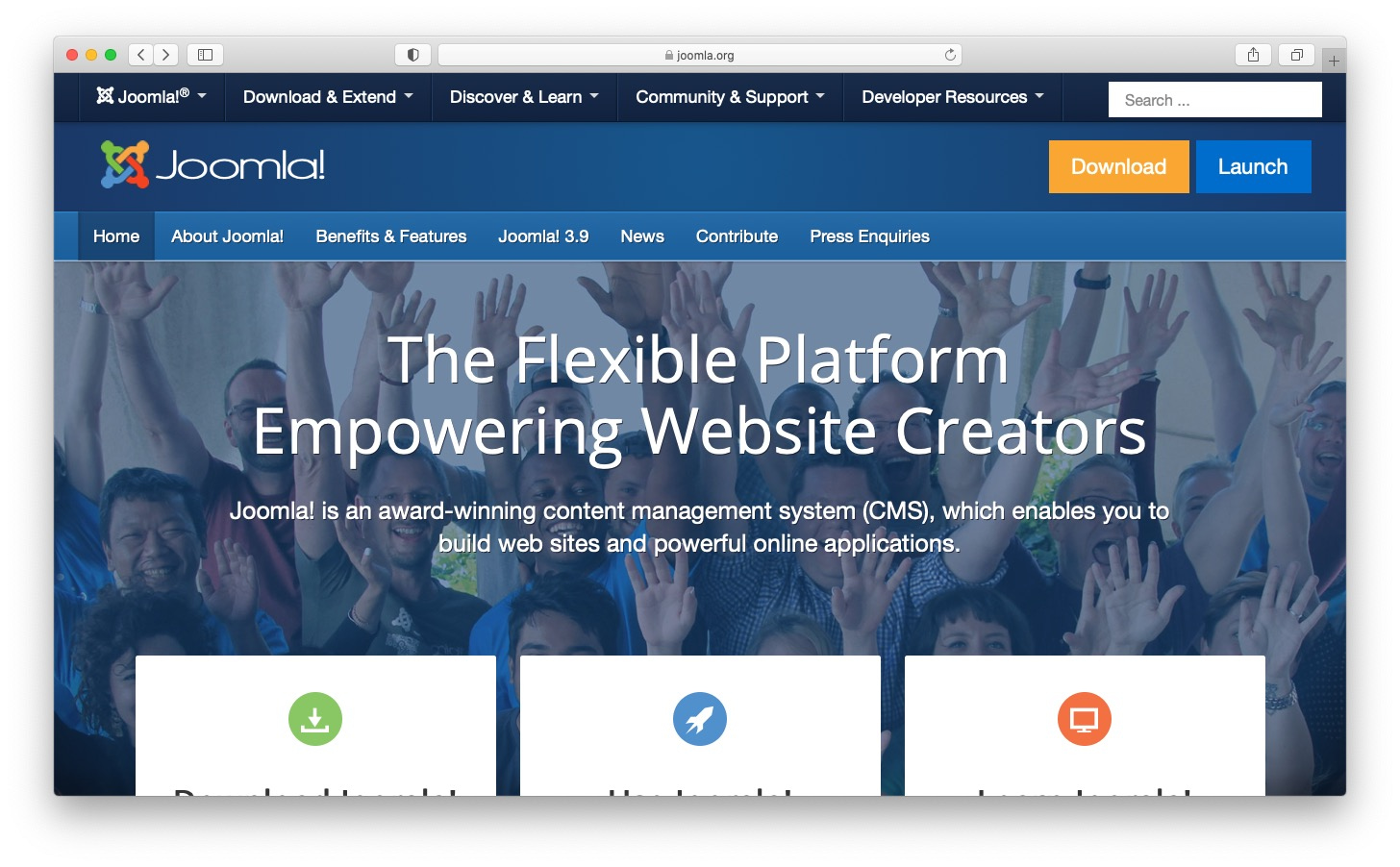
👉 Best for…people who are looking for a WordPress alternative that is capable of handling heavy load. Not the best platform for simple blogging.
Joomla is similar to WordPress.org but not as obvious when considering the free blog sites available out there. Just like WordPress, the software is free but needs hosting and a domain. As in the WordPress case, we recommend Bluehost because it is both very cheap and reliable (and it includes a free domain).
In general, Joomla has a flexible interface that can be used not only for blogs but also for more complex websites (you can choose from a variety of templates and extensions to add custom functionality).
When it comes to the ease of use, the platform provides an old-school editor, that somehow looks like Microsoft Word. It allows you to choose the font, color, size, emoticons, tables, or background. I mean, the tools in the menu make you feel like you're in a Word window.
The Joomla editor is tabbed. The first tab is the classic texting window per se, then you need to switch tabs to select the post categories, tags, date, meta description, keywords etc.
10. Jimdo (www.jimdo.com)
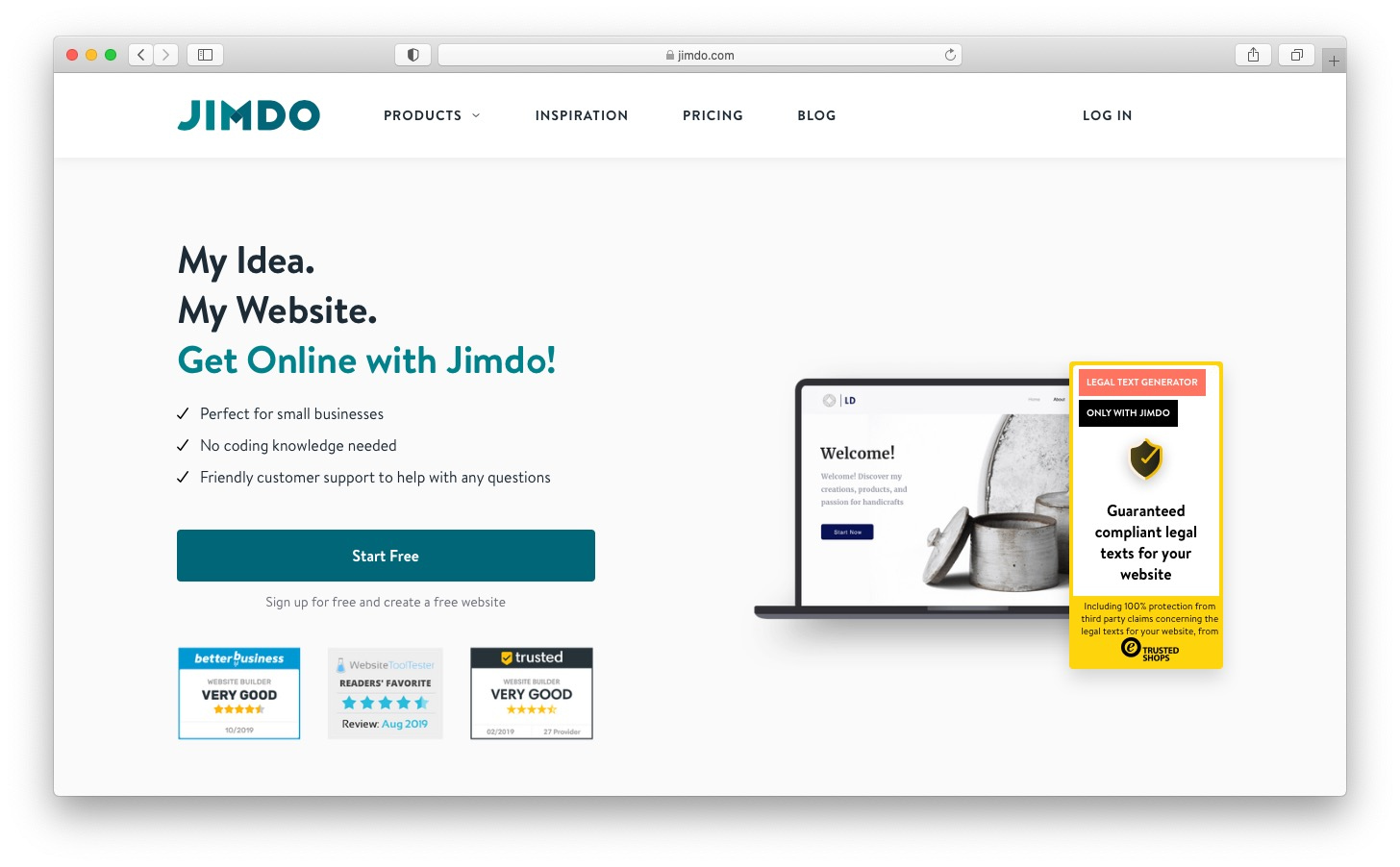
👉 Best for…people who do not need a blog of a high complexity.
Jimdo is more than just an example of free blogging sites. However, in its free version, blogs are the most recommended, given Jimdo's basic features. So you can quickly create a website with Jimdo by going through a few items (you take a basic questionnaire about your site's purpose). After you check these options, your site is automatically created based on your picks. The downside of Jimdo is that you can't have a custom domain (at least not for free) and you can't remove the ads unless you upgrade.
An important aspect of Jimdo, though, is that it is a page builder: you create blog posts right via the front-end and not via an editor (like the other blogs do). This means that you need to go to every content box on a live page and edit it on the spot, without being redirected to another page. The footer and the logo can be edited the same way. When it comes to the content elements, you have a few options: simple text, text with image, photo gallery, columns, buttons etc.
Via the left sidebar, you can make more tweaks, such as adding the post's date, title, category, status (published or draft), summary, and image preview. In short, your article will be entirely built from many individual elements that you will edit separately. Text, picture, button… the order is up to you.
How to create a blog (in 6 easy steps)
- ✅ Pick a descriptive name for your blog. Use Domain Wheel to find the perfect domain name for your blog.
- ✅ Buy a domain and get hosting for your blog. We recommend buying hosting from Bluehost (from $2.75/month) and getting your domain name free of charge.
- ✅ Install WordPress. You can install WordPress via the Bluehost interface with a few quick clicks.
- ✅ Find the perfect WordPress theme or template. Personalize the design of your blog to match your taste.
- ✅ Get some must-have WordPress plugins and add-ons. Give your blog more features like social sharing and image optimization.
- ✅ Launch your blog and start sharing your voice with the world. Start writing, sharing and engaging with your followers on your favorite subject.
Here's a video walk-through of the steps required to start your own blog on WordPress. You can treat it as a summary of what's been said above.
Ready to launch a blog with these free blog sites?
What do you think? Which one sounds like the best solution for you?
Also, if you used any of these free blog sites in the past, we would like to hear about your experiences. Submit a comment below.
Free guide
5 Essential Tips to Speed Up
Your WordPress Site
Reduce your loading time by even 50-80%
just by following simple tips.
Download free guide
* This post contains affiliate links, which means that if you click on one of the product links and then purchase the product, we'll receive a small fee. No worries though, you'll still pay the standard amount so there's no cost on your part.
How To Create A Blog Website For Free
Source: https://themeisle.com/blog/best-free-blogging-sites/
Posted by: wagonerwhiden.blogspot.com

0 Response to "How To Create A Blog Website For Free"
Post a Comment